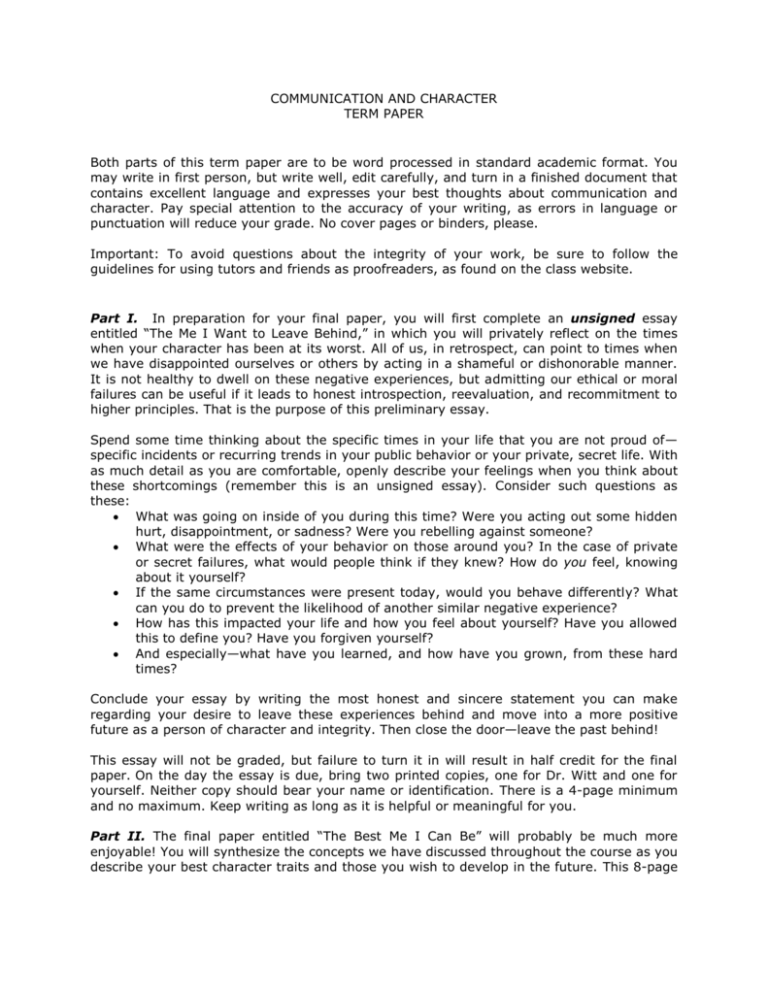The question, how many pages is a term paper? A term paper should be anywhere from five to seven pages in length. It should also include the Methodology, Literature Review, and Conclusion sections. Listed below are the different sections you should have on your paper. Listed below are some important factors to consider. Keep in mind, the page length will vary by course. The more pages you have, the higher grade you’ll get.
Term paper length varies between 5 and 7 pages
Term paper length varies among instructors and students. Short papers usually have five to seven pages, while longer papers tend to be longer, typically over seven pages. The length of a term paper depends on a variety of factors, including the subject, discussion, and conclusions. It is often helpful to estimate the length by demarcating sections of the paper. Listed below are some of the basic components of a research paper.
The length of the reference page will depend on the number of sources used. If there are few sources, the reference page will be longer. On the other hand, a paper with more sources will be shorter. Either way, a good reference page should list all of the sources, in proper referencing styles. Here are a few guidelines for determining the length of the paper:
It should have a Conclusion section
The conclusion section of your research paper should summarize your work and your key findings. Include anything that is relevant to the big picture, whether it is a limitation in your research or the design of your experiment. This is the part of your paper where you communicate your research’s value. In other words, your conclusion section should summarize your main points and make them accessible to the reader. You can also call this the “take-home message.”
The conclusion of a research paper should be brief and precise. Despite its importance, the conclusion is not the place to provide detailed information about the methodology or results of the research. It is a summary of your research findings and its implications. Listed below are some strategies that you should follow to make your conclusion section concise. If you’re not sure what to write in your conclusion, see our guide to writing a concise conclusion.
It should have a Methodology section
It is essential to include a methodology section in your term paper, as it explains how you conducted your research. This section should demonstrate that the design of your research was successful, and that the findings were valid and relevant. In addition to demonstrating that the research was rigorous, the methodology section should also show how the methods applied to the problem statement were appropriate. The following are some important tips to include in your methodology section.
The first step in describing a research methodology is to define the research methods used. Your methodology chapter should explain your choice of data collection, analysis, and sampling methods, as well as the rationale for your research. Your methodology should be informative, concise, and in the past tense, so that your readers can readily understand the purpose of the study. This will increase the credibility of your term paper and earn you more marks.
It should have a Literature Review
A literature review should be structured like an essay, with an introduction, middle body and conclusion. It should establish the relevance of the material to the discussion and its guiding concept (thesis or research question). Moreover, it should link the research with existing knowledge in the field. You can use a literature review template to help you write the literature review. This template can be downloaded by clicking on the button below. Moreover, you can use the template to take notes.
The body of a literature review is the discussion of the sources that support the thesis statement. The sources are arranged in chronological, thematic, and methodological order. The conclusion and recommendations section discusses the results of the review. This part of the literature review should include a summary of the sources used in writing the review. If any additional research or data is required, it should be cited in the conclusion/recommendations section.

